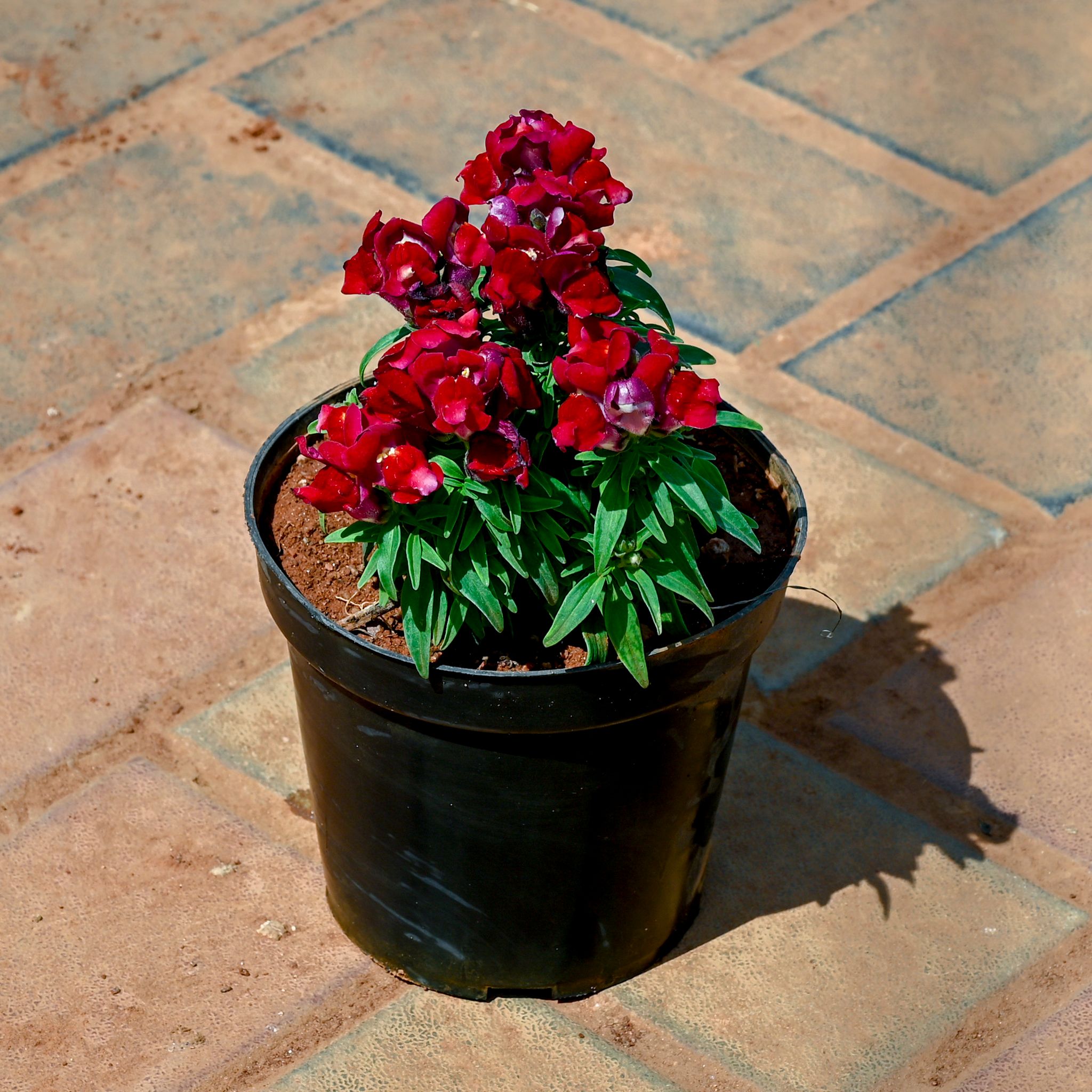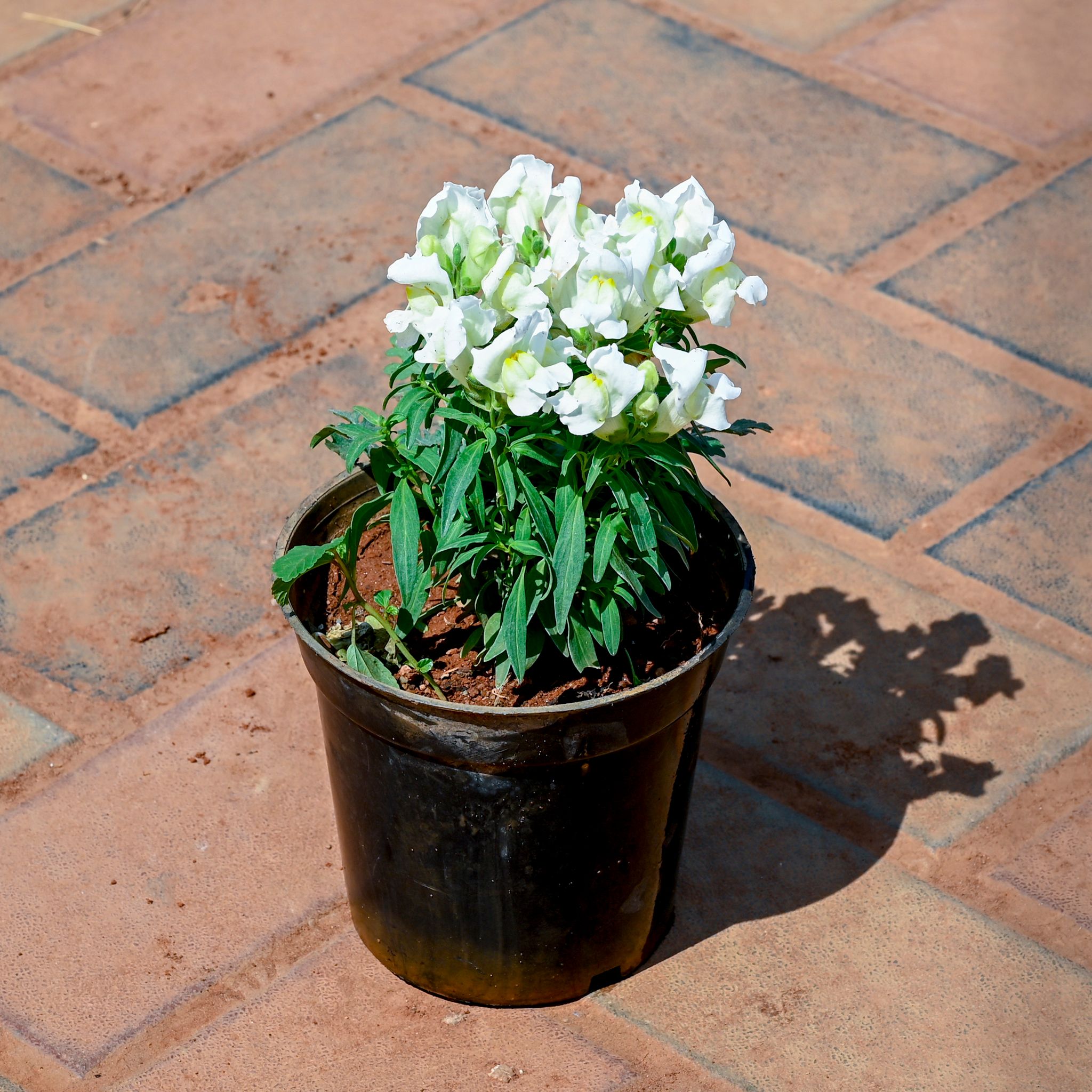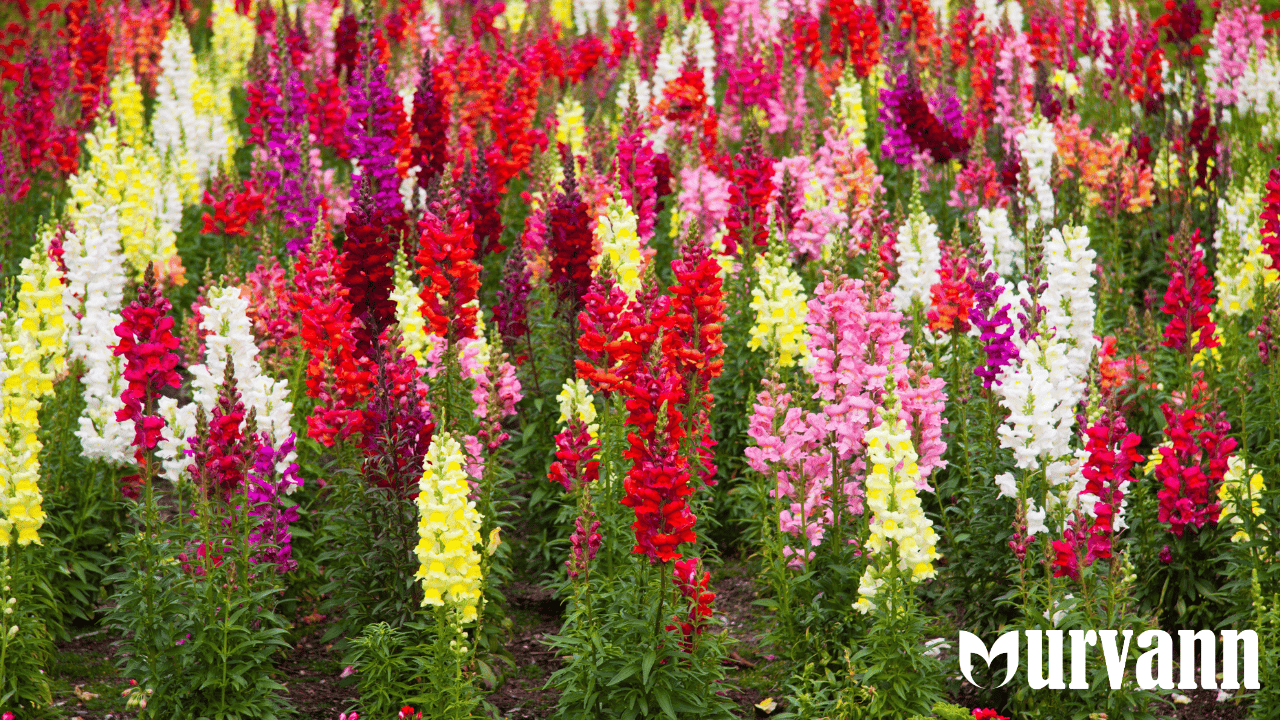The flowering plant known by the name of Snapdragons or Dog Flower (Antirrhinum majus) displays dragon-like blooms which produce a snapping motion when you grip them. Vertical bloomers create colorful character in outdoor spaces because they display an extensive range of reds, pinks, pastels, and whites. If you are a gardener, at any skill level, you will enjoy snapdragons as ornamental plants that bring several bloom seasons with appropriate maintenance.
Tips for Growing Snapdragons
Planting
- Timing: Plant snapdragons in early spring or fall. In cooler climates, start seeds indoors 8 to 10 weeks before the last frost.
- Location: Choose a spot with full sun in cooler climates or partial shade in hotter regions. Snapdragons prefer 6-8 hours of sunlight daily.
- Soil: Plant in well-draining, slightly acidic to neutral soil (pH 6.0-7.0). Amend heavy clay soils with compost to improve drainage.
- Spacing: Space plants 6-12 inches apart, depending on the variety. Dwarf varieties can be planted closer together than taller varieties.
- Depth: Plant seeds on the soil surface (they need light to germinate) or transplant seedlings at the same depth they were growing in their containers.
Watering
- Consistency: Keep soil consistently moist but not waterlogged, especially during germination and establishment.
- Technique: Water at the base of plants to keep foliage dry and prevent fungal issues.
- Frequency: Established plants need about 1 inch of water per week, either from rainfall or irrigation.
- Mulching: Apply a 2-inch layer of organic mulch around plants to retain moisture and suppress weeds.
Fertilizing
- Initial Feeding: Mix a balanced, slow-release fertilizer into the soil at planting time.
- Maintenance: Feed with a balanced liquid fertilizer (such as 10-10-10) every 4-6 weeks during the growing season.
- Bloom Booster: Switch to a phosphorus-rich fertilizer (with a higher middle number, like 5-10-5) when flower buds begin to form to encourage bigger, more abundant blooms.
Maintenance
- Deadheading: Remove spent flowers regularly to encourage continued blooming and prevent self-seeding.
- Pinching: Pinch back young plants when they reach 6-8 inches tall to promote bushier growth and more flower stems.
- Staking: Provide support for taller varieties, especially in windy locations, using bamboo stakes or flower rings.
- Division: Divide established clumps every 2-3 years in spring to rejuvenate plants and prevent overcrowding.
Pest and Disease Management
- Common Pests: Watch for aphids, spider mites, and caterpillars. Treat with insecticidal soap or neem oil at the first sign of infestation.
- Disease Prevention: Ensure good air circulation around plants and avoid overhead watering to prevent powdery mildew and rust.
- Root Rot Prevention: Plant in well-draining soil and avoid overwatering to prevent root rot issues.
Benefits of Growing Snapdragons
- Extended Blooming Season
Snapdragons distinguish themselves from other seasonal plants because they produce blooms all through spring into fall in most regions but pause their flowering state during the scorching summer weather. The colder regions allow snapdragons to produce flowers during winter months.
- Versatility in the Garden
The height options of snapdragons extend from dwarf varieties measuring 6 to 15 inches to intermediate forms at 15 to 30 inches and tall types at 30 to 48 inches, which allows them to be used in various ways, including on the borders and for edge work or even as a visual height statement.
- Attracts Beneficial Pollinators
The tubular snapdragon flowers naturally empower bumblebees, honeybees, and specific butterflies to visit your gardens.
- Cut Flower Excellence
The long sturdy stems of snapdragons enable them to function as top-quality cut flowers which last longer in vases, thus allowing people to display them indoors.
- Fragrant Varieties Available
The sweet, subtle fragrance of numerous snapdragon varieties becomes most noticeable during morning and evening hours, although not all snapdragons display this trait. To make the most of their scent, plant your snapdragons in proximity to patios, garden benches, and near windows so you can breathe in their light fragrance while you relax outdoors. If you enjoy aromatic gardens, be sure to explore our Fragrant Flowering Collection — a handpicked range of blooms that elevate your space with irresistible scents.
- Low Maintenance, High Reward
Everyone has a lot of demanding matters already. The maintenance requirements of Snapdragons become minimal after their planting period. Simple maintenance will result in extended periods of colourful blooms, which allow you to prioritise important tasks instead of chair-hunting for afternoon napping.
Final Thoughts
Symbolically, the Snapdragon plant (Antirrhinum majus) is culturally quite significant. Their distinctive dragon shape merits a name that derives from Greek words meaning "like a nose." They symbolize power and elegance in Victorian flower language. Snapdragons not only look pretty but also are purported to protect their owners from evil spirits and unwanted guests. Their ruggedness and tolerance for varying conditions make them a symbol of courage and are often used to convey appreciation and thanksgiving. So, take up this guide and plant your Snapdragon today.
Frequently Asked Questions
1. Are snapdragons annual or perennial plants?
Snapdragons are actually short-lived perennials (zones 7-11) but are usually grown as annuals in cooler climates. They can survive for 2-3 years in regions with mild winters, although they will become woody and less flowering after the first year.
2. When is the best time to plant snapdragons?
The ideal planting times are early spring (after the last frost) or fall in warmer climates. In colder regions, start seeds indoors 8-10 weeks before your last expected frost date.
3. Why are my snapdragons falling over?
Tall varieties may fall over due to top-heavy growth, especially after rain or in windy conditions. Provide support with stakes or plant cages. Leggy growth from insufficient light can also cause flopping—ensure plants receive adequate sunlight.
4. How do I keep snapdragons blooming longer?
Regular deadheading (removing spent flowers) is the key to prolonged blooming. Also, protect plants from extreme heat with afternoon shade in hot climates, and continue regular watering and feeding throughout the growing season.
5. Can snapdragons be grown in containers?
Absolutely! Snapdragons, especially dwarf and intermediate varieties, perform excellently in containers. Use a high-quality potting mix with good drainage, and ensure that containers have drainage holes. They make wonderful additions to patio pots, window boxes, and hanging baskets.
6. Do snapdragons come back from seed?
Yes, snapdragons will self-seed readily in the garden if spent flowers are left on the plant. However, since many snapdragons are hybrids, seedlings may not look identical to the parent plants. To maintain specific colors or varieties, collect seeds from individual plants or purchase new seeds annually.
7. How cold-tolerant are snapdragons?
Snapdragons are surprisingly cold-hardy for flowering plants. They can tolerate light frosts and continue blooming in temperatures down to about 40°F (4°C). In zones 7-11, they may survive winter to bloom again the following spring.
8. Why are my snapdragon leaves turning yellow?
Yellowing leaves can indicate several issues: overwatering, poor drainage, nutrient deficiencies, or pest problems. Check soil moisture (allow the top inch to dry between waterings), ensure good drainage, apply a balanced fertilizer, and inspect for pests like aphids or spider mites.


